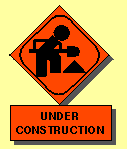| 5 CFR § 752 | | Federal employees are not allowed to engage in behavior that “may be . . . injurious to the employee, his fellow employees, or the general public.” Smoking behavior involves all these violations, as many lawsuits reveal:
|
Lawsuits by Smokers on Smoking as Harmful to Themselves
Green v. American Tobacco, 304 F.2d 70 (5th Cir. 1962), question certified on rehearing, 154 So.2d 169 (Fla. 1963), rev’d and remanded, 325 F.2d 673 (5th Cir. 1963), rev’d and remanded on rehearing, 391 F.2d 97 (5th Cir. 1968), rev’d per curiam, 409 F.2d 1166 (5th Cir. 1969) (en banc), cert. denied, 397 US 911 (1970).
Pritchard v. Liggett & Myers Tobacco Co., 134 F. Supp. 829 (W.D. Pa., 1955), rev’d and remanded, 295 F.2d 292 [22 NCCA3d 421] (3d Cir. 1961), aff’d on rehearing, 350 F.2d 479 (3d Cir. 1965), cert. denied, 382 US 987 (1966), modified, 370 F.2d 95 (3d Cir. 1966), cert. denied, 386 US 1009 (1967).
Albright v. R. J. Reynolds Tobacco Co., 350 F. Supp. 341 (W.D. Pa. 1972), aff’d mem., 485 F.2d 678 (3d Cir. 1973), cert. denied, 416 US 951 (1974).
Cooper v. R. J. Reynolds Tobacco Co., 234 F.2d 170 [80 ALR 675] (1st Cir. 1956), dismissed, 158 F. Supp. 22 (D. Mass. 1957), aff’d, 256 F.2d 464 (1st Cir. 1958)
Hudson v. R. J. Reynolds Tobacco Co, 427 F.2d 541 (5th Cir. 1970).
Ross v. Philip Morris and Co., 328 F.2d 3 (8th Cir. 1964).
Lartigue v. R. J. Reynolds Tobacco Co., 317 F.2d 19 (5th Cir. 1963), cert. denied, 375 US 865 (1963)
Fine v. Phillip Morris, Inc., 239 F. Supp. 361 (S.D.N.Y. 1964).
Padovani v. Bruchhausen, 293 F.2d 546 (2d Cir. 1961).
Lawsuits v. Suppliers on Other Tobacco-Related Harm
Pillars v. R. J. Reynolds Tobacco Co., 117 Miss. 490, 78 So. 365 (1918).
Foley v. Liggett & Myers Tobacco Co., 136 Misc. 468, 241 N.Y.S. 233 (App. Term 1930), aff’d mem., 232 App. Div. 833, 249 N.Y.S. 924 (1931).
Weiner v. D. A. Schulte, Inc., 275 Mass. 379, 176 N.E. 114 (1931).
Liggett & Myers Tobacco Co. v. Rankin, 246 Ky. 65, 54 S.W.2d 612 (1932).
Corum v. R. J. Reynolds Tobacco Co., 205 N.C. 213, 171 S.E. 78 (1933).
Liggett & Myers Tobacco Co. v. Wallace, 69 S.W.2d 857 (Tex. Civ. App. 1934)
Dow Drug Co. v. Nieman, 57 Ohio App. 190, 13 N.E.2d 130 (1936)
For more information, see Southern California Law Review, Vol. 53, 1980, pages 1423 - 1465, article by law professor Donald W. Garner, “Cigarette Dependency and Civil Liability: A Modest Proposal.”
|
